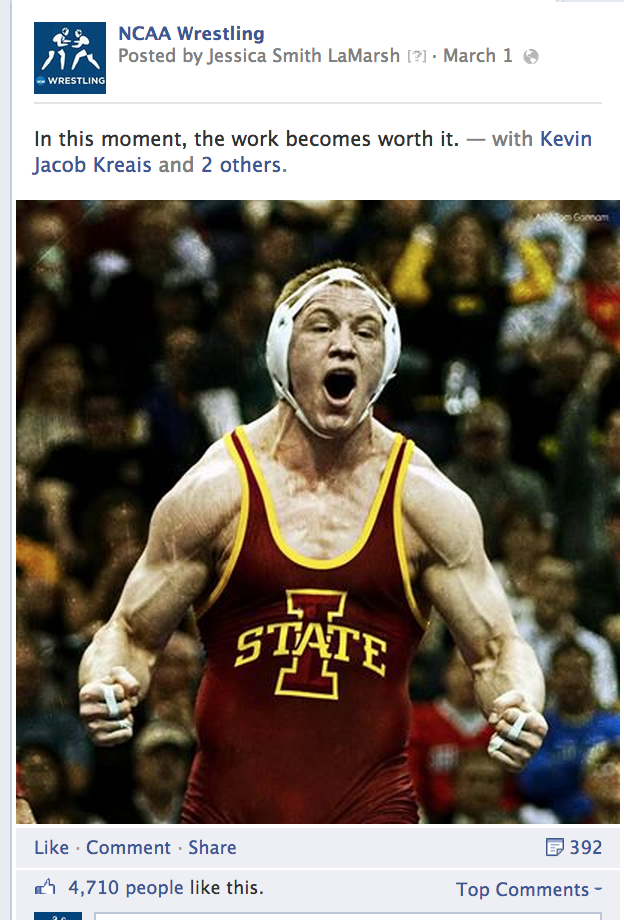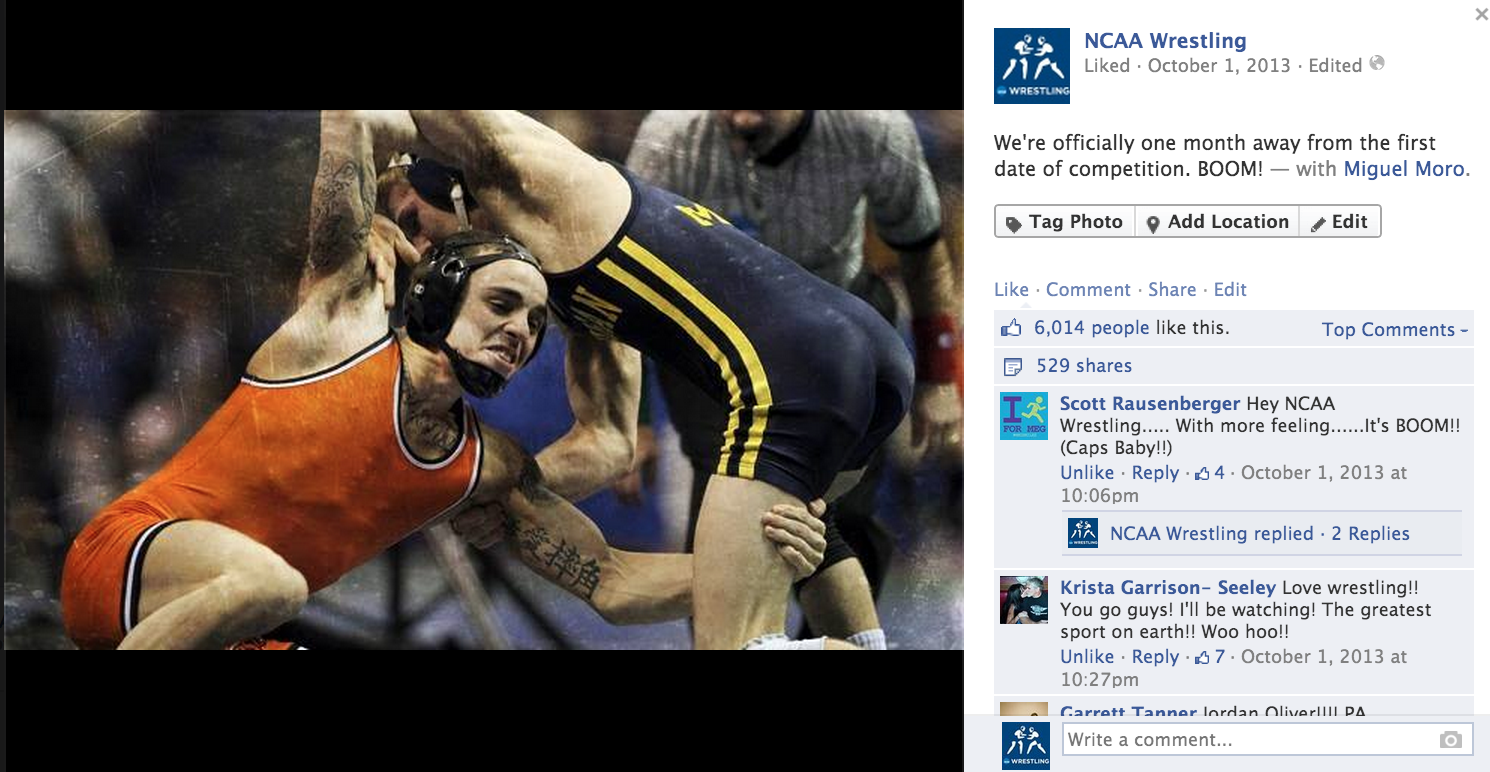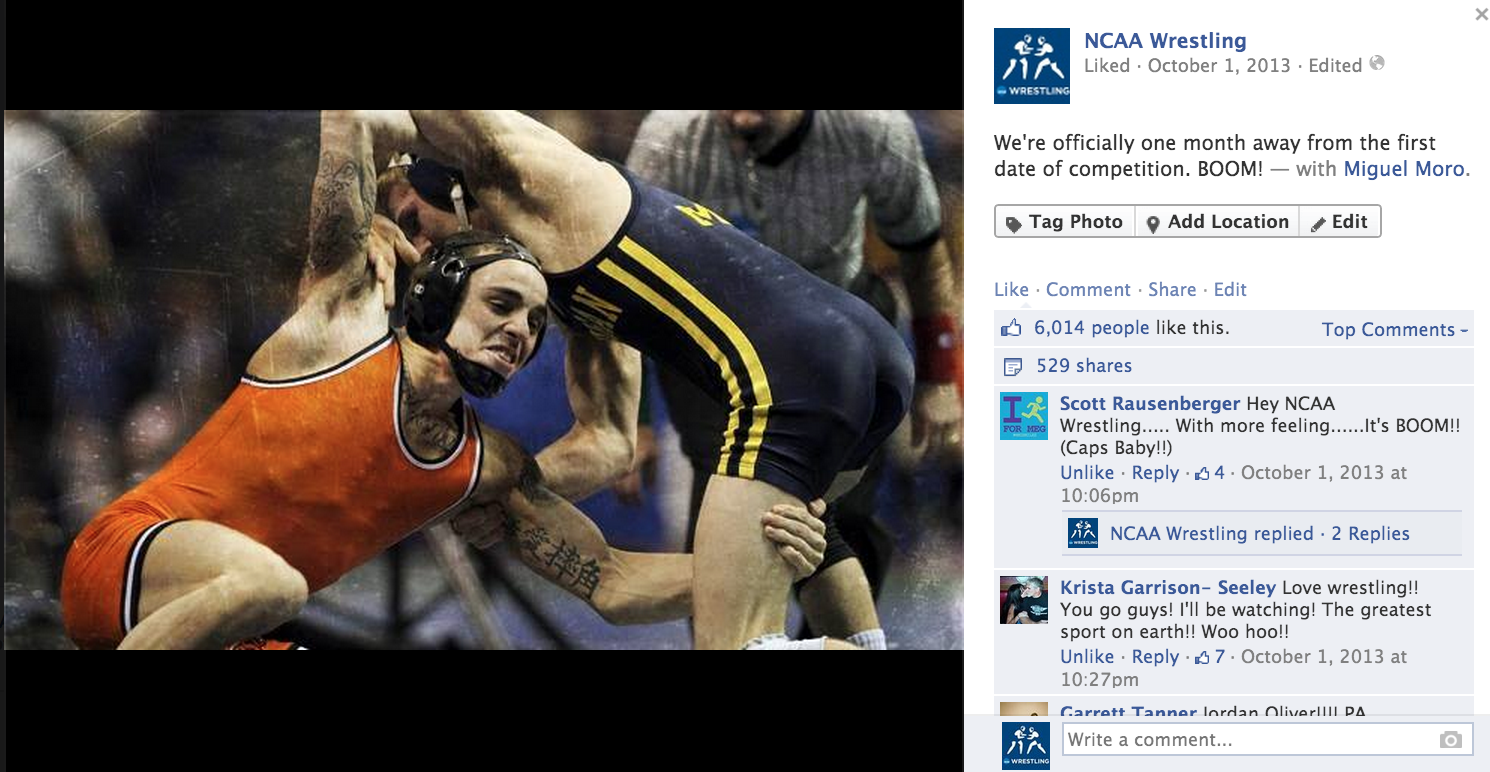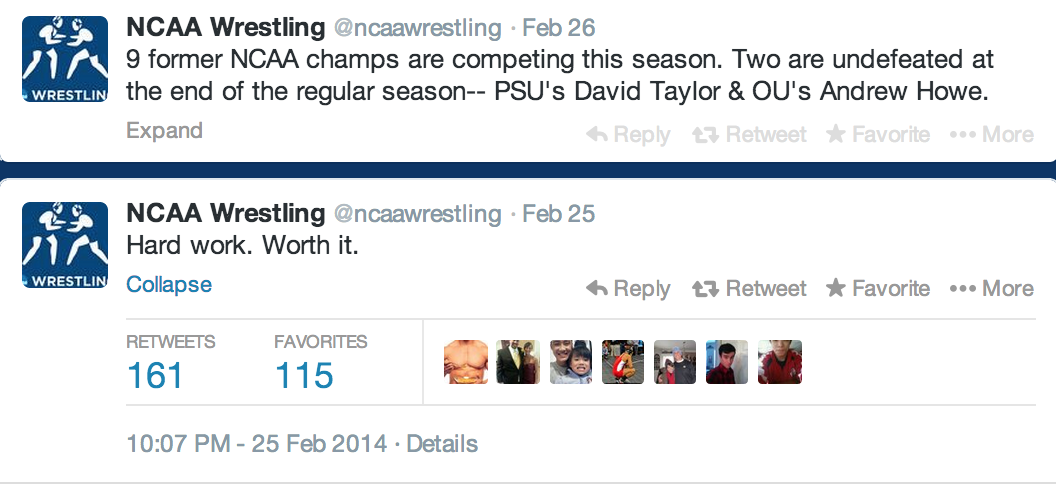Social media gives us an entryway to fans and consumers. But even with the access, social media managers can’t just sell, shout “me” and make it all about the team, league or company. People want to interact with brands the way they do every other person on social—through a personal and authentic relationship.
Here’s what I’ve learned… social media is less about the platforms and more about the way we communicate to build those relationships. As crazy as it sounds, a big key to success lies in tapping into psychology. You have to know your audience.
I typically don’t talk about my own work here, but with this topic it is hard to talk about someone else’s success without really understanding their work inside and out. So, I would like to focus on my experience with NCAA Wrestling (Twitter, Facebook). Through it I’ve come to understand how important the psychology behind the work we do actually is. It’s my job to think, act and talk like a wrestler.
Being authentic on the wrestling platforms was trying at first. I’ve never wrestled. In fact, I had never been to a wrestling meet or had any interaction with the sport before diving into the community. Because of this, I had to take the time to talk with people who are engrained in the sport, understand the demographics and study content success.
Wrestling has taught me the important role psychology plays in social media, and for that, I’m thankful. I’ve seen some success in the community because I can answer the fundamental questions below about my audience. It is my hope that the questions below are helpful for you too:
1. What are the basic demographics?
This one isn’t rocket science, but before you can dive into deeper questions you need to have an understanding of your current audience and the ones you are trying to reach. Not understanding target demographics is like playing darts without a bull’s eye.
2. If you built a fan persona, what would it look like?
After you have the basic demographics down, dig deeper. Take the time to build a persona(s) of your fan(s). Knowing who they are and what makes them tick will guide everything you do.
Never built a persona? Here’s a good how-to guide.
3. How do they consume?
When you work in social media, you can’t get bogged down with all the platforms. Instead, you have to focus on the ones that will help you reach your audience. There are tons of social media statistics out there about how fans like to consume information based on demographics. Lean on this information and your own research (combination is key) to understand how they like to consume.
If you are armed with the right demographic information (target or current), you can make more sound decisions about which platforms to activate on and how.
4. How do they talk?
In social media and sports, it’s just as important to use the conversational language of your fans as it is to use the sports lingo. I preach this all the time, but throw out the stiff copy and tweets that read like box scores. Establish your voice.
Because I know my audience skews younger and largely male on NCAA wrestling, I try to use words like boom, sweet and sick. Sometimes, Urban Dictionary is my best friend. I don’t use these words in my daily vocabulary, but it’s not about me. In fact, one of the biggest compliments someone can give me on the wrestling platforms is to think that I’m a guy.
A good social media manager doesn’t have to have experience in the subject matter; they know how to do their research, build personas, adapt and be creative. Take the time to study how your audience talks, and then use their language when crafting copy. In order to humanize a brand you have to be conversational and speak the language of your fans.
5. Why do they care?
If you understand why your audience cares, then you understand why they are coming to your platforms. This will help you grasp the type of content they are looking for.
With NCAA wrestling, the answer to this question is pretty simple… most of the audience cares because they have participated (or are participating) in the sport at some level. I have some fans that care very specifically about college wrestling itself, but most care very broadly about the sport. Because of this, I know that my content has to be a combination of NCAA-related posts and generic wrestling posts.
6. What connects them?
After you have connected the dots above, there’s a good chance you’ll realize you have a couple different audiences. In order to bring your community together, you need to find the common thread. What connects them?
For the NCAA wrestling community, I’ve learned that the common thread is simply the love of the sport and the emotional connection they have to it. Because of that, I try to use phrases like “our sport” and tap into emotion. The posts that connect those dots often get the most traction.
When you feel like you are in a content / community rut, take the time to step back and evaluate what you are doing. Make sure you tap into the minds of your audience. Make your work resonates. Build the relationships your fans and consumers want… an authentic one. Bottom line, use the questions above to think, speak and act like your fans.
0







Great blog, Jessica!
Relating to your audience is the key to creating an appropriate voice. I’ve handled client accounts for far-off demographics like senior citizen women and girls under 13. You don’t talk to them the same, and you wouldn’t talk to every sports fan the same, either.
[…] is not the ONLY way your team can have a personality. Personality can be in the words you use (talk like your fans), the tone, the images you share, etc. Personality is about sounding like a human, not like a […]